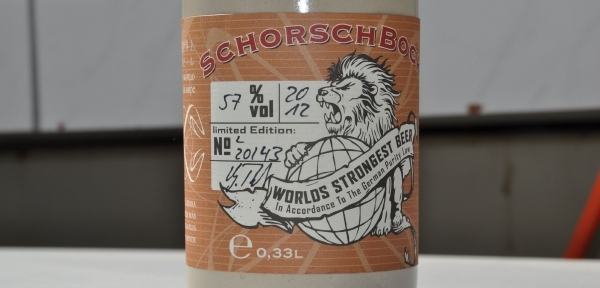Several years ago I was hawking Tuppers’ Hop Pocket Ale at a supermarket when a woman who was about to drink the sample stopped. “This is beer; does it have alcohol?” she asked. Of course there are no alcohol and very low alcohol beers, so she wasn’t entirely foolish, but 99.4% of the more than one hundred billion liters the world drinks in a year are alcoholic beverages. So let’s relegate “I only drink for the flavor” to the “it’s not the money, it’s the principle” pile at the outset.
Brewers have known for centuries that strength matters. The makers of the original Russian Imperial Stouts tried to brew a beer strong enough to wean Russians off vodka in the 18th century. Various Russian governments have tried a number of times to promote beer to accomplish the same purpose. All failed.
The surge of craft brewing in the 1990s saw a mad dash to create the “strongest” beer in the world. EKU in Kulmbach, Germany, claimed the title for its EKU 28, as much for its huge initial gravity as for its 11% abv. The brewery continues to claim it is “one of the strongest beers in the world”. Michael Jackson believed it was, in essence, an ice bock – a beer in which water is removed by freezing, thereby increasing the alcoholic strength of the remaining beer. EKU employs a complex network of super cooled pipes and Jackson thought it worked to accomplish an ice bock effect, though he could never get the brewery to publically admit it. The 11% was impressive at the time, but is pretty paltry among the myriad of heavyweights these days – we tasted more than a hundred stronger beers in 2016 alone.
In 2002, we hosted a tasting at the Brickskeller in which Sam Calagione presented his World Wide Stout which he had coddled up to 22.3% alcohol. Sam had thought he was going to take the lead in the strong beer category, but he was never able to match Samuel Adams Utopias which soared to 28%. We know of bottles of Utopias that have sold for upwards of $300; a friend shared some of his and it was good, but not $300 good.
Any record broken can be broken again. The Scottish Brew Dog’s Tactical Nuclear Penguin left Utopias in the dust with a 32% ice bock. They in turn fell to the German brewery Schorschbrau’s Schorschbock 40 with, you guessed it, 40% abv. It did reach commercial sale, but only a handful of cases were produced—apparently designed for sale in Brew Dog’s back yard. Brew Dog fought back with Sink the Bismarck, an obvious reference to its German rival, that reached 41%. We’ve had the Brew Dog beers and the taste is interesting and perhaps worth the eight bucks for a mini-shot of the stuff. If you think of them as liquor, they taste like beer.
Schorschbrau, of course, didn’t quit and its 57 Doppelbock is the current record holder. It’s held the title for the last 5 years, but we suspect Brew Dog is up to something somewhere – possibly north of the Arctic circle.
We’ve had a few beers from Schorschbrau and they were pretty good, though the strongest we found was a 16%er and we thought their comparatively feeble 13% ice bock had the best flavor of the range.
What lies ahead in 2017? We’re thrilled to see a return to alcoholic sanity in the increasing number of session beers that hover between 4% and 5%. Excluding mass market cheap Chinese beers, more beers are produced around the world that fall between 4.7% and 5.3% than in any other comparable range. It’s enough to keep the firemen happy when they come knocking at your door, but not so much that you only get to have a thimble before your wallet and liver are screaming for you to quit.
(*from the drinking song, “The Old Dun Cow”)
Post 0022 January 1, 2017




Leave a Reply